Let's talk Irish Wolfhounds
With their coarse, wiry coats often in grey or brindle, Irish Wolfhounds were originally bred to hunt large prey, but have long ago left behind those wild origins. Unkempt of hair and amiable of temperament, modern-day Irish Wolfhounds make charming, affectionate companions. They’re huge of course, and with impressive muscles, speed and strength, they need space and exercise to stay healthy. But they’re also docile, affectionate and fun.
Official name: Irish Wolfhound
Origins: Ireland
Tendance à baver
Perte de poils
Besoins d'activité physique (élevés, faibles, moyens)
Sociable avec les autres animaux
Apprécie les températures élevées ?
Adapté à la vie en appartement ?
Amical avec les enfants ?*
Capacité à rester seul ?*
| Mâle | Femelle |
|---|---|
| Taille | Taille |
| 79 - 86 cm | 71 - 86 cm |
| Poids | Poids |
| - 54.5 kg | - 40.5 kg |
| Âge adulte | |
|---|---|
| De 8 mois à 2 ans | |
| Âge mature | Âge avancé |
| De 2 à 5 ans | À partir de 5 ans |
| Jeune chiot | |
| De la naissance à 2 mois | |
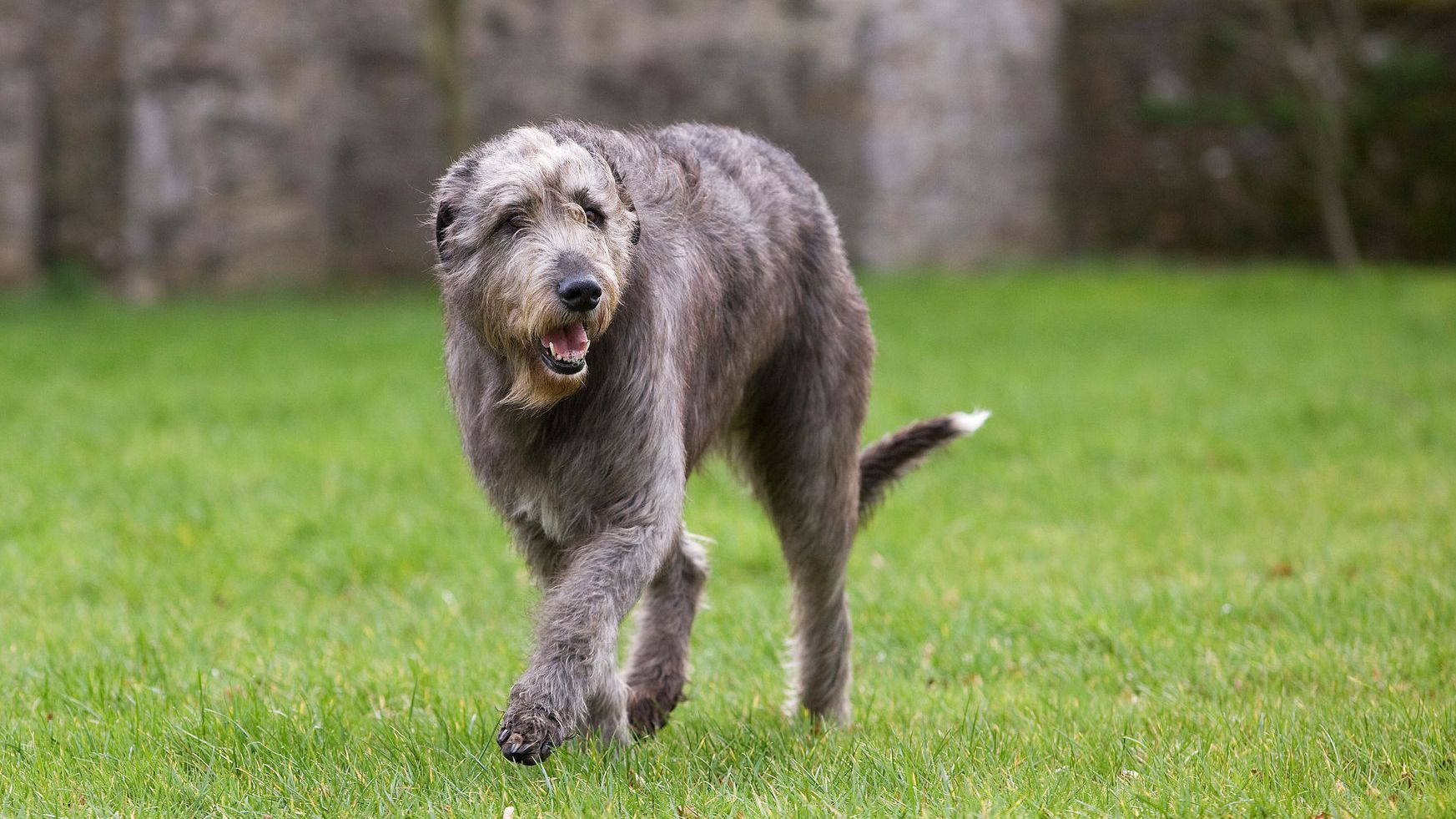
Get to know the Irish Wolfhound
All you need to know about the breed
It’s appropriate that a breed whose exact origins are lost in the (Irish) mists of time, should look like something out of an ancient legend. With their wiry, coarse coats and slightly whimsical expressions, it’s easy to imagine Irish Wolfhounds of yore bounding across ancient moors or curled up in front of the crackling hearth of a great hall.
But in the real world, modern-day Irish Wolfhounds make a lovely addition to any household with the space to cope with this supersize but sweet-natured dog. These sighthounds (dogs originally bred to hunt prey principally using sight and speed, rather than scent) need space to spread out those long, greyhound-like muscular legs.
While they are not always on high-energy mode – they can be quite content just lolling around close to their people when they’re at home – Irish Wolfhounds do need regular exercise to keep those muscles in good condition. They also benefit from an enclosed garden (the fence needs to be high!) to run around in, free from smaller creatures that might otherwise bear the brunt of that ancient chasing instinct. That said, once trained, they’re usually fine with other animals within their household.
Irish Wolfhounds get on brilliantly with children, under supervision of course, and make a great addition to the family—although you may need a bigger car.
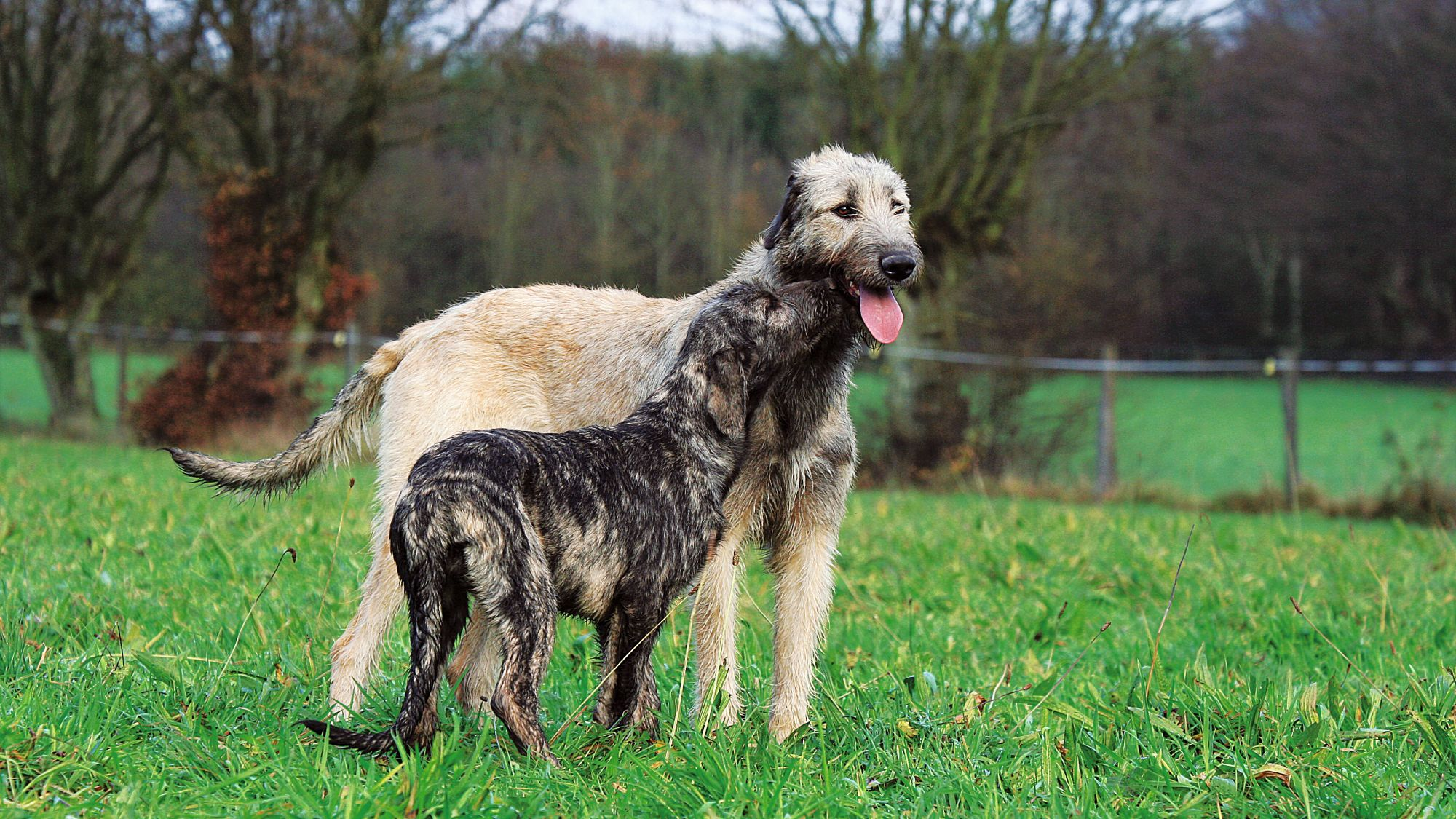
2 facts about Irish Wolfhounds
1. White House Wolfhounds
Herbert Hoover was the first U.S. president to keep an Irish Wolfhound at the White House—his was called Patrick. John F. Kennedy, perhaps in a nod to his Irish heritage, also had an Irish Wolfhound, just one of a whole pack of presidential dogs. He went by the name of Wolf.
2. (Irish Wolf)hound of the Baskervilles?
Some people have suggested that Sir Arthur Conan Doyle’s hound in the Sherlock Holmes mystery The Hound of the Baskervilles – “a great black beast shaped like a hound yet larger than any hound that ever mortal eye has rested upon” – was supposed to be an Irish Wolfhound. Although the description fits in terms of size and shape, these sweet, affectionate and sociable dogs have nothing else in common with the terrifying hell-hound of Conan Doyle’s imagination.
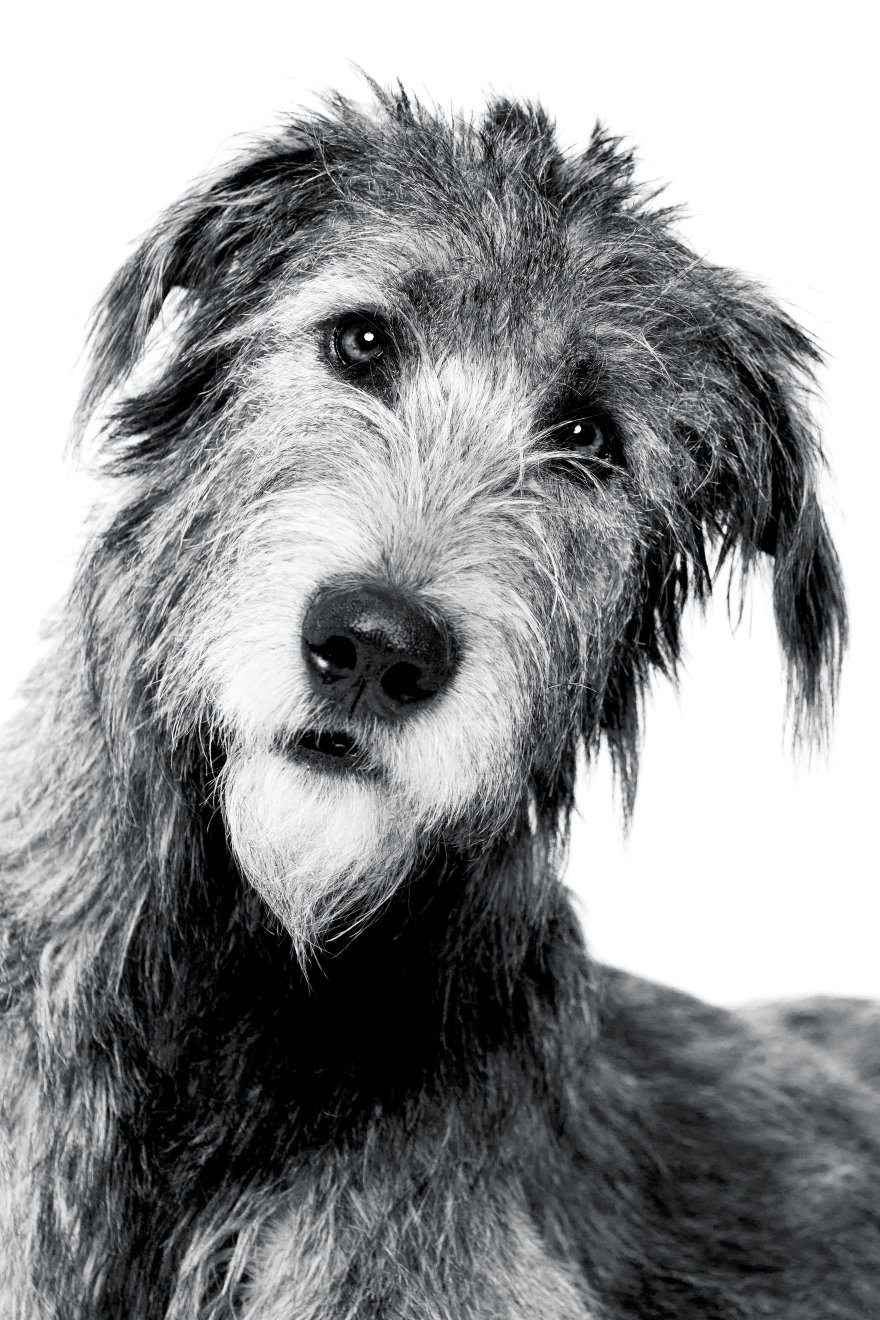
Historique de la race
Irish Wolfhounds have inspired their fair share of legends. The most famous (almost certainly made up) is the subject of a poem by W.R. Spencer, which tells the story of Gelert the faithful hound “a lamb at home, a lion in the chase” whose master bitterly regretted mistakenly killing his faithful dog, who had protected his baby from a wolf.
Although information about the true origins of the Irish Wolfhound is hard to come by, the breed probably began with crosses between the coursing hounds of the Middle East that were traded around the world and large native dogs. References to Irish Wolfhound-like dogs were made in Roman records and by the Middle Ages they were well established as hunters of large prey: Deer and especially wolves, hence the name.
They were a bit too good at their job and, as wolves began to die out in Ireland, the Irish Wolfhound itself faced extinction. A British Army Captain, George Augustus Graham, saved the breed in the 19th century, gathering together all the remaining dogs he could find and making it his mission to standardise and promote the Irish Wolfhound breed.
DE LA TÊTE À LA QUEUE
Physical characteristics of Irish Wolfhounds
1.Oreilles
2.Tête
3.Corps
4.Pelage
5.Queue
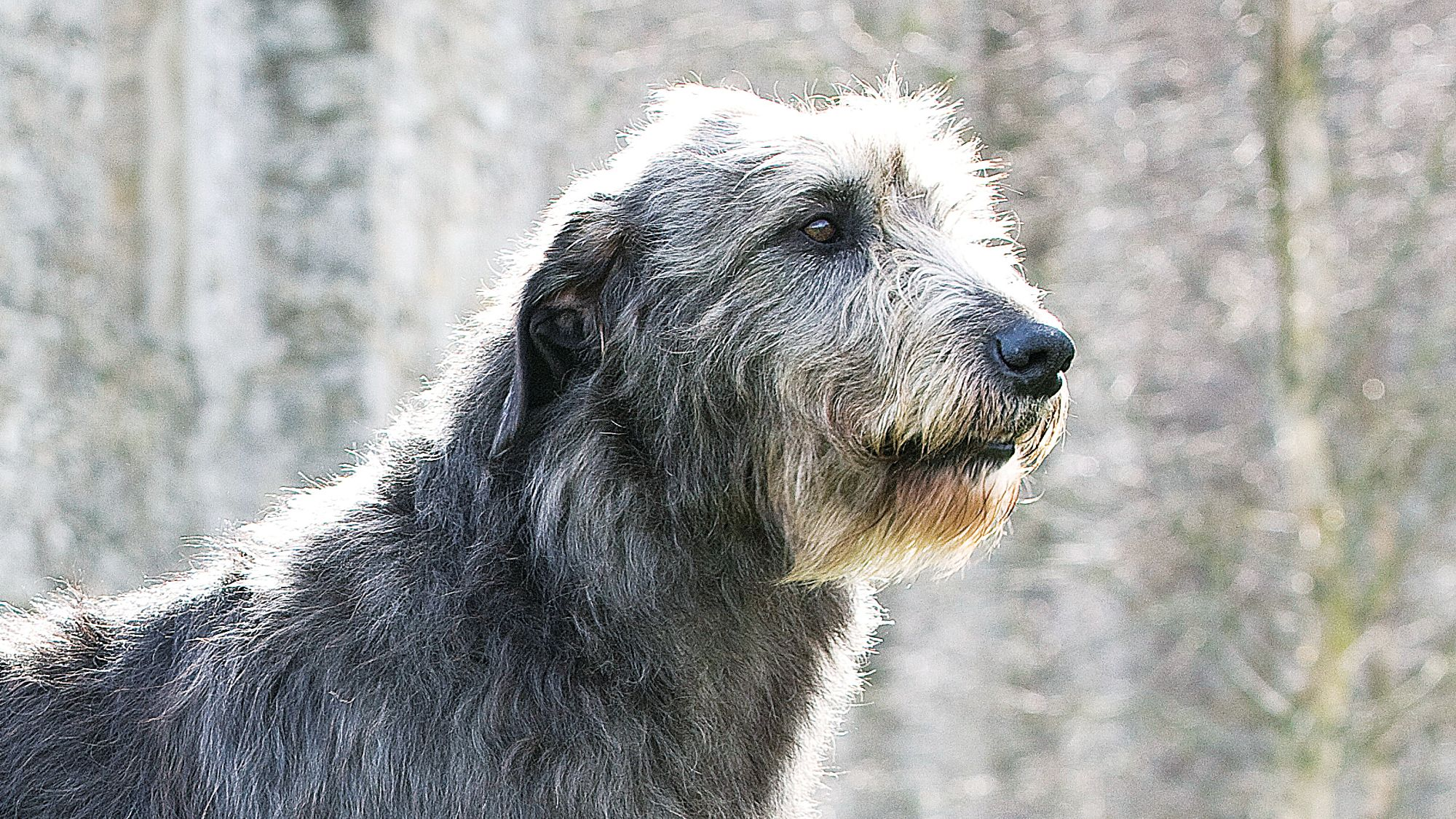
LES POINTS À SURVEILLER
DES TRAITS SPÉCIFIQUES DE LA RACE À UNE VUE D'ENSEMBLE DE LA SANTÉ, VOICI QUELQUES FAITS INTÉRESSANTS SUR VOTRE IRISH WOLFHOUND.
Healthy heart
Les Irish Wolfhounds sont sujets à des problèmes ostéo-articulaires, y compris des déformations de croissance telles que l'ostéodystrophie hypertrophique, une maladie inflammatoire des os qui peut affecter les races géantes à croissance rapide. Plus tard dans la vie, ils peuvent également souffrir d'arthrose. La race peut également être sujette à des problèmes cardiaques. Des contrôles réguliers chez le vétérinaire sont importants pour s'assurer que votre Irish Wolfhound est traité à temps en cas de problème.
Bloat alert
Like other large breeds, Irish Wolfhounds can suffer from gastric dilatation-volvulus, more commonly known as bloat, a serious, even life-threatening condition thought to be brought on by eating or drinking large quantities quickly and then exercising. Symptoms can include a bloated abdomen, restlessness, retching, drooling and whining or sudden stillness—and immediate help from a veterinarian is needed.
Une alimentation saine pour un chien en meilleure santé
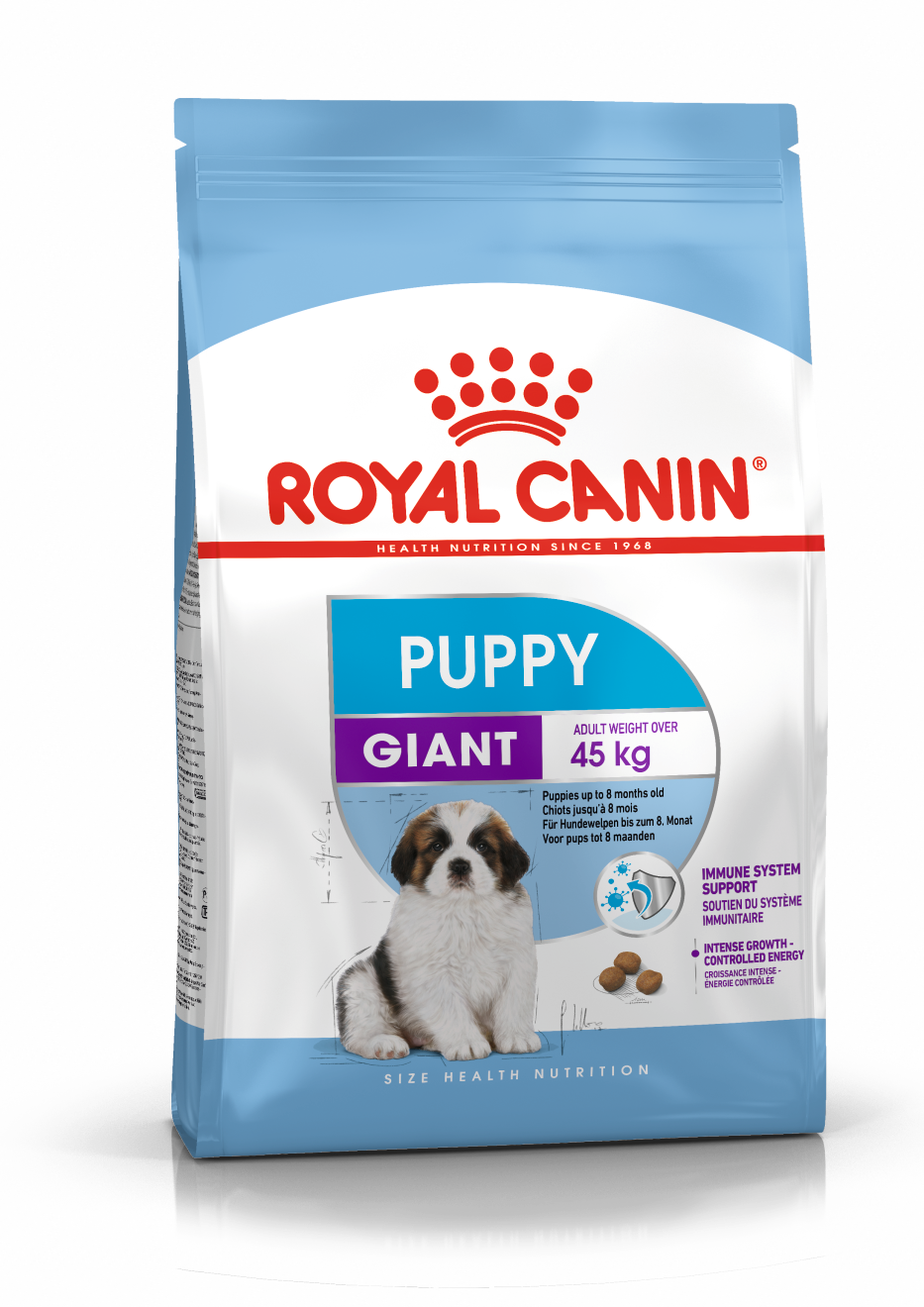
When choosing food for an Irish Wolfhound, there are many factors to consider: Their age, lifestyle, activity level, physical condition, and health including potential sickness or sensitivities. Food provides energy to cover a dog’s vital functions, and a complete nutritional formula should contain an adjusted balance of nutrients to avoid any deficiency or excess in their diet, both of which could have adverse effects on the dog. As giant-sized breed dogs have a higher risk of a condition called gastric dilatation volvulus (GDV), where the stomach becomes overstretched and rotated because of excess gas (usually caused by overfeeding during a meal), it’s recommended to split the daily allowance into three meals for puppies and try to keep this routine into their adult years.
De l'eau propre et fraîche doit être disponible en permanence pour favoriser une bonne régularité urinaire. Par temps chaud et surtout lorsque vous faites de l'exercice, apportez de l'eau à votre chien pour qu'il puisse s'abreuver fréquemment. L'apport énergétique peut également devoir être adapté aux conditions climatiques. Un chien qui vit à l'extérieur en hiver aura besoin d'un apport énergétique plus élevé.
Les recommandations suivantes s'appliquent à des animaux en bonne santé. Si votre chien souffre de problèmes de santé, consultez votre vétérinaire qui vous prescrira un régime alimentaire exclusivement vétérinaire.
An Irish Wolfhound puppy’s requirements, in terms of energy, protein, minerals, and vitamins, are greater than those of an adult dog. They need energy and nutrients to maintain their body, but also to grow and build it. During their growth, an Irish Wolfhound puppy’s immune system develops gradually. A complex of antioxidants – including vitamin E – can help support their natural defences during this time of big changes, discoveries, and new encounters. Their digestive functions are different from an adult Irish Wolfhound’s, too: Their digestive system is not mature yet so it is important to provide highly-digestible proteins that will be effectively used for the building of bones, tissues, and organs. Prebiotics, such as fructo-oligosaccharides, can support digestive health by helping balance the intestinal flora, resulting in good stool.
Les chiots de taille géante, dont la période de croissance est longue et intense, sont particulièrement sensibles aux problèmes squelettiques et articulaires, notamment les malformations des membres, les déformations osseuses et les lésions articulaires.
The first part of growth (up to 8 months) is mainly concerned with bone development, although the muscles also start to grow. This means that a puppy that eats too much (takes in too much energy) will put on too much weight and grow too quickly. A food with an adjusted calorie content to support a high growth rate while at the same time avoiding excess weight gain will help minimise these risks. A balance of energy and minerals (calcium and phosphorous) during this first phase of growth will contribute to bone mineralisation in order to support bone consolidation and the development of healthy joints. Although the calcium content in the food needs to be increased, giant-sized breed puppies are more sensitive to excessive calcium intake. It’s important to understand that adding any ingredients to a complete food formulated for the growth phase is at best unnecessary and at worst dangerous for the animal, unless prescribed by a veterinarian.
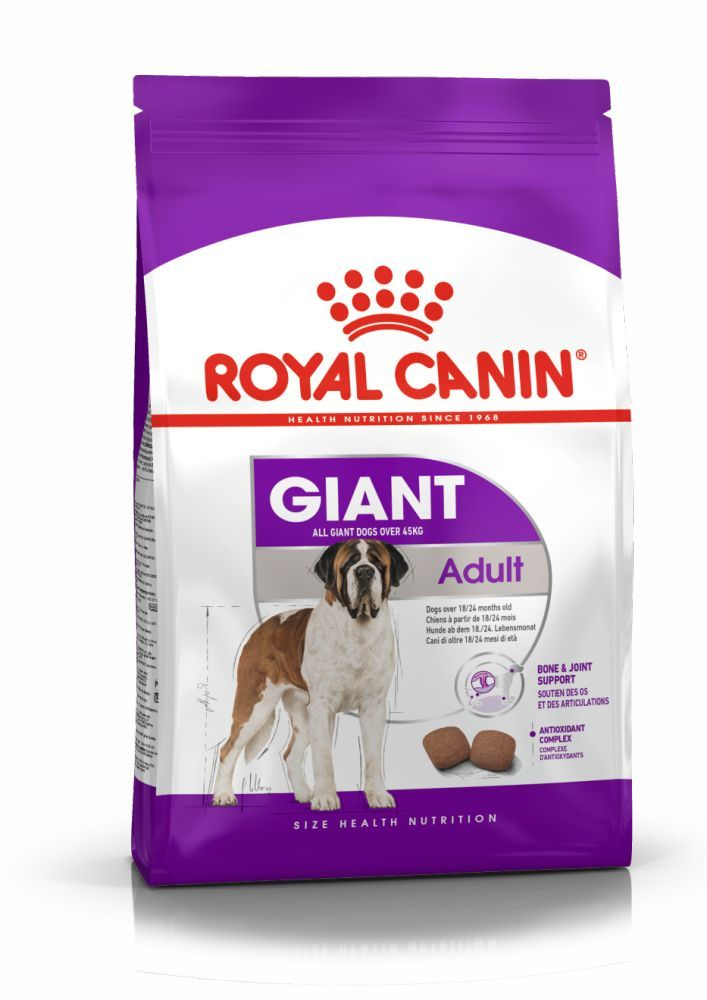
As with many giant-sized breed dogs, Irish Wolfhounds are prone to digestive sensitivity, and their body weight can create stress on their joints throughout their lifetime. Irish Wolfhounds’ nutritional needs then should include high-quality protein and a balanced supply of dietary fibre to help promote optimal digestibility, as well as glucosamine, chondroitine, and antioxidants to help support the health of their bones and joints. A formula enriched with omega-3 fatty acids, such as EPA and DHA, will help maintain healthy skin. An adapted taurine content is also important to support healthy heart function.
It is important to avoid feeding Irish Wolfhounds human foods or fatty snacks. Instead, reward them with kibble taken from their daily meal allowance, and strictly follow the feeding guidelines written on the package.
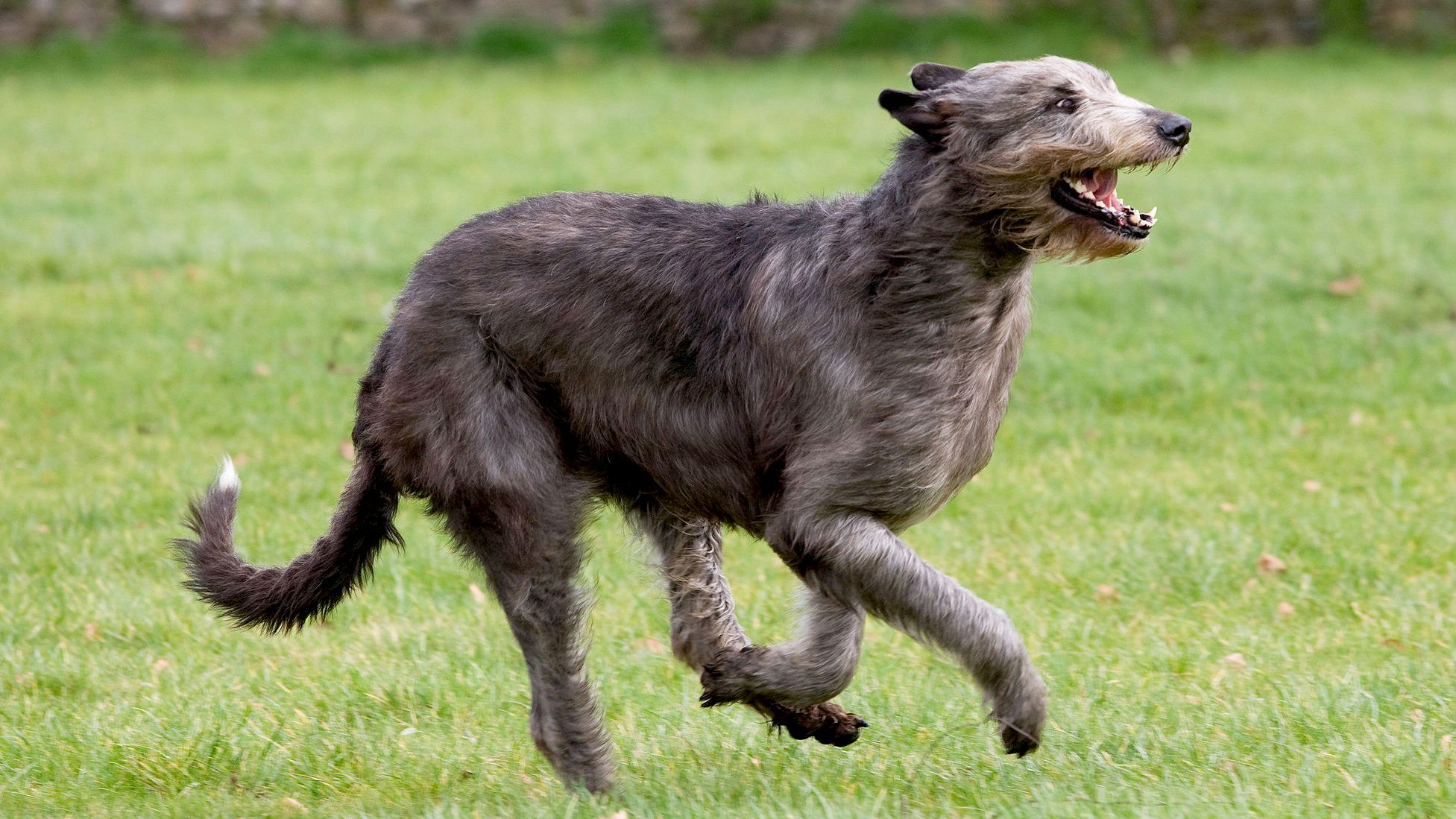
Caring for your Irish Wolfhound
Conseils en matière de toilettage, d'éducation et d'exercice
Irish Wolfhounds have a double coat that consists of a harsh, wiry outer layer covering a soft undercoat. They need to be brushed once a week or so to stay clean and keep their coat in good condition. Even though Irish Wolfhounds are not the most energetic breed, and can be content just lounging around when they’re at home, regular exercise is important: Those extraordinary muscles need to be used if they’re to stay in good condition. Long walks on a lead combined with opportunities to play in a safe, enclosed space are ideal.
These big dogs stay puppy-like for an extended period, not maturing until around 18 months. That leaves plenty of time for puppyish mischief. But the good news is that Irish Wolfhounds are intelligent, and with patient, positive and consistent training, starting early on, as well as socialisation (puppy classes can help) you should see progress.
7/7
All about Irish Wolfhounds
Yes—if you have the space. Irish Wolfhounds are certainly big dogs, which may be off-putting to some. But they’re also big softies who are affectionate to their human family members and get on fine with other pets. Irish Wolfhounds are good with children too although of course they should not be left unsupervised with young ones.
Irish Wolfhounds shed a moderate amount—less than you might expect given their shaggy appearance. The breed has a double coat made up of a wiry outer layer and a soft undercoat. They need to be brushed around once a week.
Races suggérées
En savoir plus à ce sujet
Sources
- Veterinary Centers of America https://vcahospitals.com/ ;
- Royal Canin Dog Encyclopaedia. Éditions 2010 et 2020
- Banfield Pet Hospital https://www.banfield.com/
- Livre de produits Royal Canin BHN
- American Kennel Club https://www.akc.org/
Aimer et partager cette page